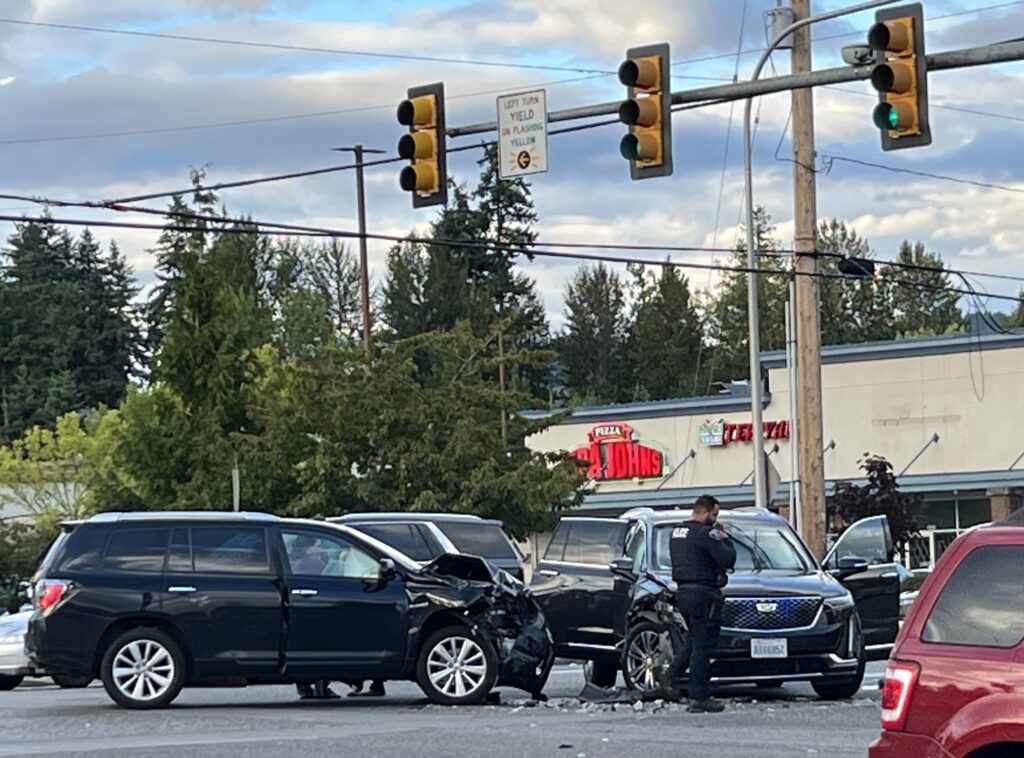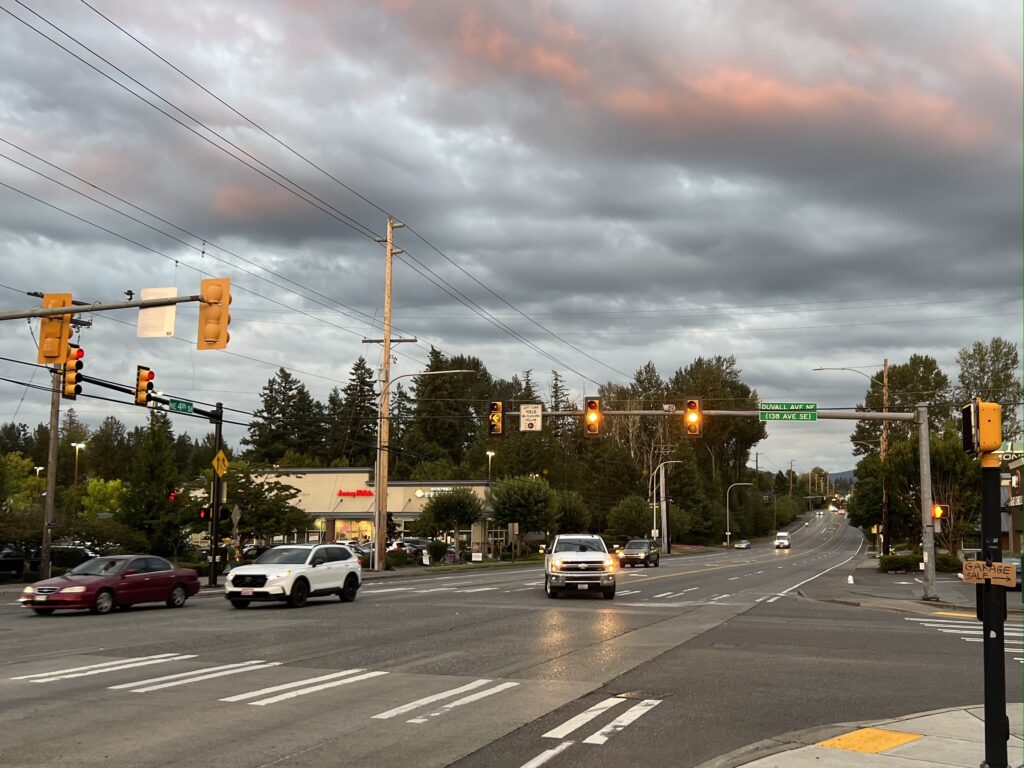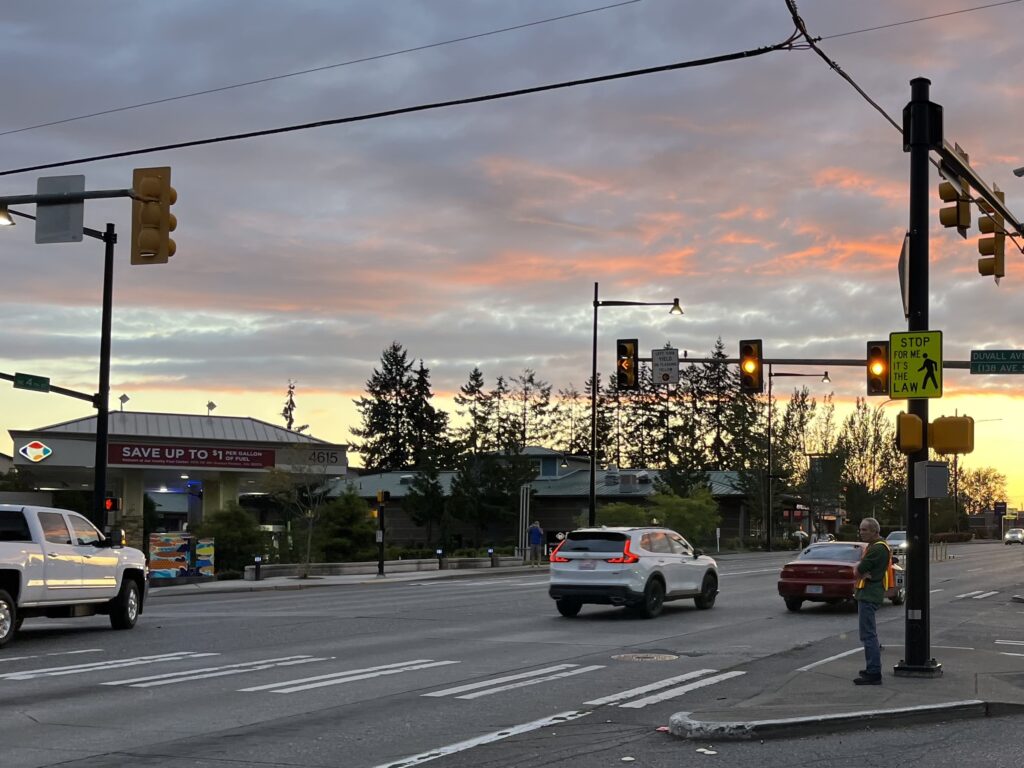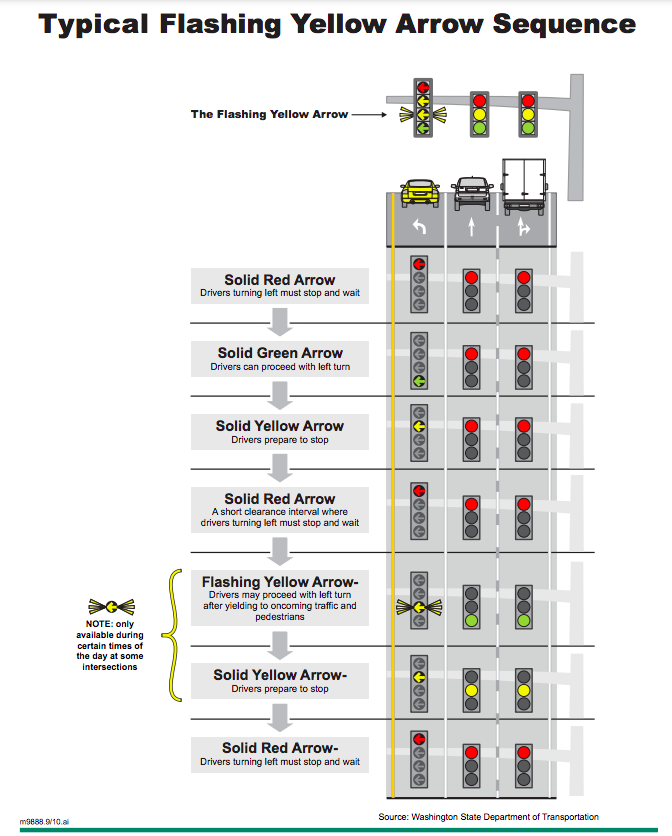
A collision September 6th at NE 4th Street and Duvall continues a frustrating pattern of frequent recent accidents at this intersection. Thankfully, drivers and passengers appeared to be able to walk away from this one. (Cause of this accident unknown at time of writing. Photo by Randy Corman)
There have been a lot of accidents at NE 4th and Duvall recently. Every collision is unique, and there are many potential root causes for each of these accidents; high speed, distraction, inattention, and other common driving errors are typically to blame. Some residents have questioned whether the flashing yellow left-turn arrows might be contributing. This question was also raised numerous times in Bellevue, which has been switching over to these flashing lights for years, and the Bellevue reporter covered the question thoroughly in 2015 in this article here.
These flashing arrows improve intersection efficiency and are in compliance with state and federal manuals. For maximum safety it is important for motorists to thoroughly understand these newer signaling arrangements to avoid errors that contribute to accidents.
In 2009 the Federal Highway Administration updated their Manual on Uniform Traffic Control Devices to allow flashing yellow arrows to replace circular green lights over lanes where left turns are allowed when safe (called permissive turning conditions). Both a circular green light and flashing yellow arrow mean the same thing in this case, but the flashing yellow arrow was found to be more intuitive for drivers, by reminding them to use caution and yield to oncoming traffic. (Note that only a green arrow indicates a protected left turn in which the left turn has right of way.)
Under the 2009 manual, the flashing arrow will briefly switch to a solid yellow arrow to mark the end of the permissive left turns for each traffic cycle, and this requires driver attention.
Most drivers already associate a solid yellow arrow with the short period following a green arrow, when drivers typically complete protected left turns and clear the intersection. In solid yellow arrows after green arrows, red lights are stopping oncoming traffic for the duration of the yellow arrow.
In contrast, the solid yellow arrow following a flashing yellow is NOT a protected left turn period. When a flashing yellow arrow switches to solid yellow, oncoming drivers’ traffic signals may still be yellow, and oncoming motorists may still be entering the intersection. So left-turning drivers must concentrate, and NOT make a reflexive left-turn just because their flashing yellow arrow turns to a solid yellow arrow. Motorists are advised not to enter the intersection on the flashing yellow unless they have good indication that there are no conflicting cars or pedestrian movements that will prevent them from safely completing their turn; and they should definitely not enter the intersection on the solid yellow following the flashing yellow.
It can also be disastrous if a driver is speeding down the street, spots a solid yellow left-turn arrow, and quickly executes the left turn thinking they can do it in a few seconds– if it is the solid yellow arrow marking the end of a permissive turning period, they will not have right of way.
In summary, if a motorist is waiting for an opportunity to turn at a flashing yellow arrow, and it turns to a steady yellow arrow, they should NOT assume traffic will immediately yield for them to complete their turn. And hurried motorists should not speed up to catch the yellow left-turn arrow and execute a quick left turn– they could cause a collision. All drivers should observe speed limits, understand the signals, and pay extra-close attention at busy intersections.

This photo, and the one below it, were taken at the exact same moment in time from opposite directions. Both directions of travel have solid circular yellow lights in the through lanes, and solid yellow arrows in the left turn lanes. If two motorists were speeding from opposite directions, trying to catch the yellow lights and not properly yielding, they could collide with each other if one is turning left and the other is going straight.

This photo, and the one above it, were taken at the exact same moment in time from opposite directions. This one is looking west. The turn arrow and circular lights are all solid yellow. My wife took this photo, and I can be seen across the street taking the photo above. (The cars shown safely and legally entered the intersection on green or yellow lights.)
The chart below shows how the arrow sequences work, and shows compatible adjacent lane signals. Oncoming traffic lanes will typically have matching signals. Note the difference in the adjacent lanes’ signals for the two different solid-yellow arrow cases. (Cars in other lanes are stopped for red in one case, and rushing to get through the yellow in the other.)

This chart can be found on the City of Bellevue’s website here
The excerpt below is out of the Federal Highway Administration Manual on Uniform Traffic Control Devices


Recent Comments